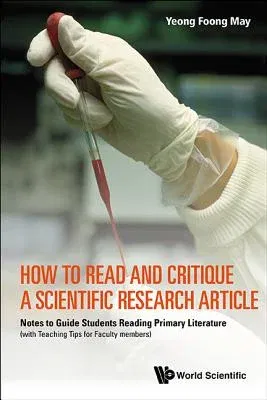Given the explosion of information and knowledge in the field of Life
Sciences, adapting primary literature as materials in course work as
part of active learning seems to be more effective in improving
scientific literacy among science undergraduates than the pure
transmission of content knowledge using traditional textbooks. In
addition, students also read research articles as part of undertaking
laboratory research projects useful for preparing them for graduate
school. As such, a good grasp of reading and analytical skills is needed
for students to understand how their research project contributes to the
field that they are working in. Such skills are being taught at UK and
USA universities. In Asia, this approach in teaching has not yet been as
widespread, although similar ideas are beginning to be used in
education. Written as a quick guide for undergraduate students and
faculty members dealing with scientific research articles as part of a
module or research project, this book will be useful, especially in
Asia, for students and faculty members as the universities look to
incorporating the use of scientific research articles in their
undergraduate teaching.For Life Science students, the first time they
encounter a primary literature can be rather daunting, though with
proper guidance, they can overcome the initial difficulties and become
confident in dealing with scientific articles.This guidebook provides a
structured approach to reading a research article, guiding the reader
step-by-step through each section, with tips on how to look out for key
points and how to evaluate each section.Overall, by helping
undergraduate students to overcome their anxieties in reading scientific
literature, the book will enable the students to appreciate better the
process of scientific investigations and how knowledge is derived in
science.

